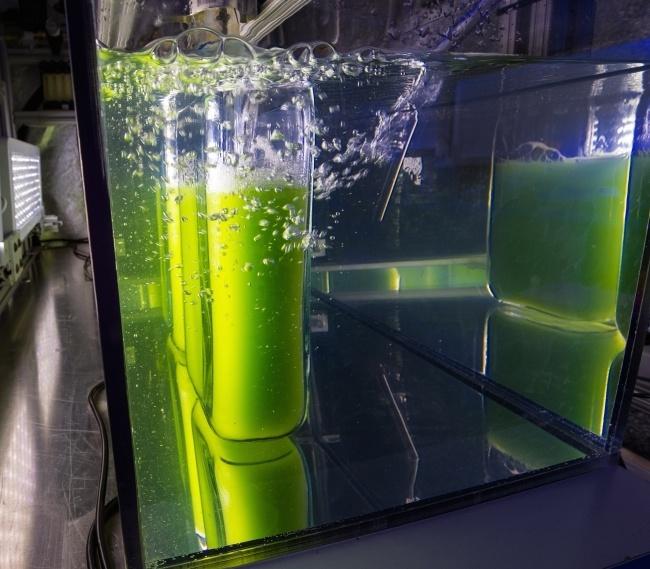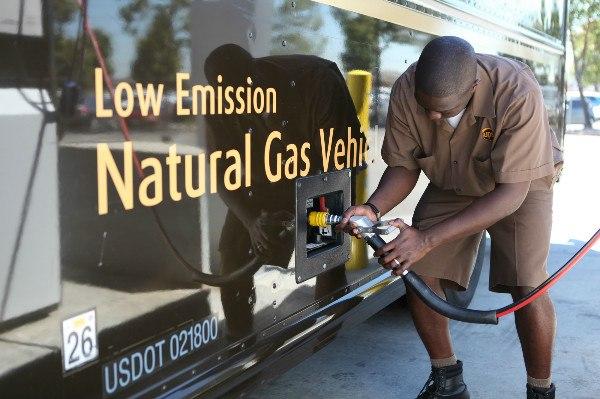Quick Guide to the FDA’s Food Labeling Regulations


By Dana Harris
Whether you approve of or criticize the FDA’s ways of regulating food-related issues, there’s no way of going around it. The FDA is in charge of regulating about 80 percent of food products and food packaging labels on the U.S. market. So, if you are a food producer, you better familiarize yourself with the agency’s requirements for proper food labeling.
Many food producers agree that the FDA regulations on food labeling are complex and sometimes not clearly defined, so creating a label that will pass authorization and not be a reason for penalties is not so easy to do. Food manufacturers often team up with food labeling experts to come up with a food label that will contain all of the information required by law. However, before paying money for a food packaging label that’s compliant with FDA regulations, it is wise to know at least the basics of proper food labeling:
1. Most packaged food products sold and distributed in the U.S. require labels that will contain the following information:
- Statement of identity, which is the common name for that type of food (e.g. sausages)
- Net weight of the product
- Address of the producer or distributor
- List of ingredients (starting from the heaviest, to the lightest)
- Nutrition facts (consisting of information about the serving size, nutrients, and vitamins and minerals)
- Principal Display Panel and Information Panel are two parts of a label that are facing the consumer and that need to contain the five mandatory food label elements.
- There is no requirement for the specific font style, but the type needs to be at least size 6 and in good contrast with the background for the nutrition facts label (the FDA recommends white background and black font).
4. Five nutrients that must appear on all nutrition facts labels are:
- Calories
- Total Fat
- Sodium
- Total Carbohydrates
- Protein
To learn a bit more about the basics of proper food labeling, food producers can download this e-book on FDA Food Label Requirements in a Nutshell. It’s a recently created resource that condenses pages and pages of information on labeling as advised by the FDA, and it’s a good resource for both consumers and food producers, but especially for people who are new in the food business. It also provides links to all the relevant pages on the FDA website where food business owners can find more information.
Image credit: FoodPackagingLabel.net
Dana Harris is a food market analyst for FoodPackagingLabels.net, the manufacturer of high-quality blank and custom food packaging labels. She is part of their creative team that provides interesting and helpful resources to food producers and consumers.
Business ethics no longer just compliance issue, says CIMA


Nearly a third of UK-based finance professionals feel under pressure to compromise their ethical standards, according to a new report from the Chartered Institute of Management Accounts (CIMA).
The third annual ‘Managing Responsible Business’ report, which polled 2,498 professionals across the world, found that the proportion of UK-based workers reporting such pressure jumped from 18% in 2012 to 30% in 2015. Worryingly, a fifth (21%) of respondents agreed those who report concerns about unethical behavior are seen as troublemakers by management.
Tanya Barman, head of ethics at CIMA commented: “The report highlights that we are still struggling to work our way through a crisis of culture within business, and we need to maintain our focus. Our study shows that we can no longer afford to think of ethical performance in business as just a compliance issue.”
The report highlighted that although the majority of organisations have codes of ethics, only 36% of respondents confirmed that their organisations collect ethical management information (EMI). This is despite an increase in demand for data on ethical business practices, particularly from the investor community, 30% of whom are users of EMI.
The report found that countries where members face the highest levels of pressure to compromise professional ethics are Sri Lanka (61%), Malaysia (58%) and Pakistan (54%).
Conversely, respondents in the UK, US and Ireland reported the lowest levels of pressure, but still noted an increase of 12%, 7% and 5% respectively since 2012. India reversed this trend, falling to 45% from 51% in 2012.
BLOG: Is tide turning in effort to tackle climate change?


Chris Cook, AkzoNobel's Planet Possible programme director, writes about the importance of partnerships in driving down carbon emissions
President Barack Obama’s Clean Power Plan offers concrete evidence that the US is serious about getting to grips with its greenhouse gas pollution. Unveiled to great media fanfare at the White House, the regulation is designed to cut carbon dioxide emissions from US power plants 32% below their 2005 levels within the next 15 years. It is certainly an ambitious move by Obama, keen to be remembered for doing more to save the planet than any president before him when he leaves office next year. And it must give some hope for the Paris climate talks later this year.
There are also other signs that the tide is turning in the global effort to tackle climate change.
When Norway’s US$890bn (€796bn) government pension fund - the world's biggest sovereign wealth fund - recently announced plans to sell off most of its investments related to coal, it continued something of a trend for de-risking portfolios with a low-carbon future in mind.
The previous year, the heirs to the fabled Rockefeller oil fortune, who control around US$860m (€769m) in assets, set a precedent when the Foundation withdrew its funds from fossil fuel investments as part of a wider divestment movement involving 800 global investors promising to remove US$50bn worth of support over the next five years.
It is a situation - reinforced by the Bank of England investigating whether or not fossil-fuel industries pose a threat to the stability of the capital markets - that is forcing companies to re-think their longer-term business strategies. Despite the politics of climate abatement slowly showing signs of alignment, it is this focus on corporate risk - rather than political promises - that seems to have captured the imagination in driving carbon reduction in the business world.
However, a renewed consideration for the long-term might well be in vogue, but progress by companies to address their environmental and social impact is still slow. In a post-two degree world, certain crop yields in the US, India and across Africa are expected to decrease by up to 30%; up to 30% of animals and plant species could face extinction; and 30% of the annual sea ice could be lost in the Arctic. If you think about what’s required to avoid these scenarios (as described by the likes of the World Bank and National Research Council), we not there yet - not by a long way.
It’s time for companies to look beyond their own operations and consider the wider impact of their business and look at the entire system that sits beyond their own boundaries. By looking along the value chain of suppliers, manufacturers and raw material providers at one end, and customers and consumers at the other, businesses can get a broader view of the risks - and work towards addressing the materials, water and energy being wasted across sectors.
Just 15% of AkzoNobel’s total environmental footprint lies within our direct control. So, through our Planet Possible strategy, we aim to work more closely with both our suppliers and customers to find new ways of reducing our overall impact. By 2020, we want our entire value chain to be between 25-30% more efficient.
Central to this is helping our customers be more efficient. For example, our biocide-free coatings prevent organisms from clinging to the hulls of ships, helping shipping companies travel faster, use less fuel and produce less emissions. Our Rediset additives enable asphalt to be laid without the need for high-temperature (high carbon impact) mixing. And our Dulux Weathershield KeepCool,, an exterior paint which can reflect up to 85% more infrared radiation than traditional exterior paints, is helping to reduce energy use in buildings by up to 15%.
By working in partnership with others, it’s a lot easier to unlock some of the solutions that are required in this emerging low-carbon, resource-constrained world. Right now, as part of the Together for Sustainability initiative, our chief procurement officer - along with his contemporaries from BASF, Bayer, Evonik, Henkel, Lanxess and Solvay - are exploring ways to build a chemicals industry standard for sustainable supply chains based on current best practice across the sector.
Elsewhere, we are part of a major Dutch consortium exploring how we might use household waste as a feedstock for our chemical plants. We’re even looking into the possibility of producing chemicals from beet-derived sugar feedstock - again, working with others.
But enhanced collaboration demands new types of relationships that move beyond the traditional, purely transactional supplier relationships that companies are most familiar and comfortable with. These new partnerships must be based on transparency and trust - and the sharing of costs, risks and benefits.
AkzoNobel, and other leading companies, are proving that limitations to the world’s resources and a changing climate do not have to limit ambition and imagination as we strive to do more with less. We have also realized that many of the world’s biggest challenges cannot be solved alone. But working with others doesn’t have to be daunting. After all, you never know where innovation will come from – even the White House.
Picture credit: Dreamstime.com
Festival fever cools off with The Ice Shed


The Ice Shed is working with sustainability consultancy Anthesis to provide carbon neutral ice to campers at festivals in the UK this summer.
The Ice Shed sells ice and cooler bags at festivals as well as a roaming ice delivery service.
Anthesis will work with The Ice Shed to determine the carbon footprint of delivery of ice to festivals. The study will inform The Ice Shed about the hotspots and total carbon emitted during the lifecycle of ice delivery.
This is the first initiative developed by Mobius Concepts, a group that is looking to pursue business opportunities through recognition of the three Ps (people, planet, profit).
Ash Blythen from Mobius Concepts said: "We don’t want The Ice Shed to melt the ice caps, so we’re working with Anthesis to neutralise the carbon we produce. The festivals may be hot but we want people to be able to stay cool - and minimise their carbon footprint."
Jono Adams, associate director at Anthesis commented: "The Ice Shed is a great initiative and we’re excited to be involved. It shows that it’s completely possible to create win-win outcomes for consumers, companies and the climate."
The Ice Shed service launches this week at the Wilderness festival in Oxfordshire.
Obama, EPA Release Final Clean Power Plan


On Monday, August 3, President Barack Obama and EPA Chief Gina McCarthy released the finalized version of the Clean Power Plan, a set of regulations designed to limit the amount of greenhouse gases emitted from electricity generation. The final version increases the target reduction, compared to the original proposal, from 30 to 32 percent relative to 2005 levels.
The New York Times called it “the strongest action ever taken in the U.S. to combat climate change.”
The rollout of the plan is being couched in terms of its multiple benefits to public health, jobs, investment opportunity, grid reliability and savings for every American family estimated as an average of $85 on their annual energy bill. The announcement also speaks of continuing American leadership on climate change.
Ranked second highest in emissions, along with 10th in wind and 17th in solar, the U.S. is not exactly in the lead, but these new regulations should help us to catch up.
From the announcement:
“We have a moral obligation to leave our children a planet that’s not polluted or damaged. The effects of climate change are already being felt across the nation. In the past three decades, the percentage of Americans with asthma has more than doubled, and climate change is putting those Americans at greater risk of landing in the hospital. Extreme weather events – from more severe droughts and wildfires in the West to record heat waves – and sea level rise are hitting communities across the country. In fact, 14 of the 15 warmest years on record have all occurred in the first 15 years of this century and last year was the warmest year ever.
"The most vulnerable among us – including children, older adults, people with heart or lung disease, and people living in poverty – are most at risk from the impacts of climate change. Taking action now is critical.”
The plan provides:
- Flexibility in how states can meet their requirements
- Over a year for states to develop their plans
- Strong incentives for early deployment and deployments in low-income communities,
- Allowance for energy efficiency to be used as a key compliance tool
- A model implementation plan which includes interstate cap and trade, and
- A reliability safety valve—to address any special circumstances where meeting the regulation could threaten or compromise grid reliability.
Implementation of the plan is expected to boost the contribution of the renewable portion of our national electricity generation from 22 percent to 28 percent, while shutting down hundreds of coal-fired plants.
Reactions, not surprisingly, have been mixed. Nicolas Loris of the Heritage Foundation argued that the new rules would result in “higher energy bills for families, individuals and businesses [that] will destroy jobs and strain economic growth,” and “have a negligible impact – if any – on global temperatures.”
Republicans seem to be resting their 2016 election hopes on maintaining a fact vacuum. Mitch McConnell has come out and asked governors not to comply with the new regulations. Legal challenges, including lawsuits from as many as 25 states, led by coal producers like West Virginia and Wyoming, will likely reach the Supreme Court. The battle is expected to be fierce, but as Andrew Revkin points out, citing the Yale Climate Study, the majority of voters across party lines support regulating carbon emissions and expediting the growth of renewables.
Meanwhile, the American Sustainable Business Council (ASBC) said: “The Clean Power Plan gives states the flexibility to meet their pollution reduction targets using tactics that make the most sense for their individual situations. This smart approach will ensure businesses get the reliable energy that they depend on, while providing incentives for cleaner power sources and energy efficiency measures that will help cut carbon emissions nationwide.
"National scientific polling commissioned by ASBC shows that business owners of all political affiliations support action on climate change, with 64 percent saying that government regulation is needed to reduce carbon emissions from power plants. One in five small business owners say they have already been affected by climate change. They understand the risks of inaction as well as anyone else.”
The move also sets a tone that other countries might be expected to follow going into the COP21 discussions this fall in Paris. The message is clear. The U.S. is (finally) taking this seriously.
The plan, which I believe will survive its legal challenges, will be irrefutably positive for the country and the planet (and only bad for a small minority of people made up of energy executives, coal miners and investors that refused to see this coming). However, as Jude Clement pointed out in Forbes, people are still going to want electricity. This is going to make natural gas a winner, and probably a certain amount of fracking an inconvenient truth for environmentalists, at least in the near term.
So, let’s hurry up and get those windmills and solar panels up as soon as we can.
Related: Free Utility Customers To Profit From the Clean Power Plan
Image credit: Steve Jurvetson: Flickr Creative Commons
Energy Department Foresees Algae Biofuel in your Future


Fleet managers casting about for clean alternatives to petroleum may have more options in the near future. The Obama administration has been supporting algae biofuel research and development through the departments of Energy, Agriculture and Defense, and it looks like those efforts are beginning to pay off.
Although algae is still barely a blip on the alternative fuel screen, last week the Department of Energy offered a laundry list of reasons why algae biofuel could -- and should -- be ready to compete with fossil fuels and other biofuels, too.
In praise of algae biofuel
Algae represents a giant step forward in the field of biofuel, especially compared to food-based alternatives such as corn ethanol.
One of the main drawbacks of food-based biofuels is that they suck up agricultural resources that face increasing stress from the twin whammies of population growth and climate change.
In contrast, algae can be grown in environments where food cannot be grown. Man-made ponds, brackish water and wastewater are the examples cited by the DOE.
That advantage also provides algae biofuel with the potential to introduce new commercial activity into communities. Texas A&M University, for example, is deeply involved in algae biofuel research, and it recognizes economic as well as environmental benefits:
"With its high oil content algae is ideal for producing biodiesel and jet fuel, and it can be cultivated in brackish water on land unsuitable for growing food … Commercial microalgae farms in west Texas would generate jobs and enhance economic growth. Co-products from algae biofuels production show potential as a protein supplement in cattle feed or as a source of nitrogen fertilizer. This makes algae for fuel more economically sustainable."The Energy Department's algae biofuel article is a quick read, but for those of you who need things even quicker, here's the breakdown.
When the DOE talks algae, it's not talking about something that resembles seaweed or other water plants. It's talking about micro-scale organisms, aka "microscopic green machines," which harvest solar energy and store it in the form of oil.
The agency sees progress in the following areas:
- Engineering and/or finding natural strains of algae that can maximize oil production.
- Developing efficient methods for growing and harvesting algae, then dewatering and concentrating algae material for refining.
- Transitioning from demonstration-scale operations to commercial scale.
If you still don't have time to look over the DOE article, the department also offers a brief Energy 101 Algae-to-Fuel video (2.5 minutes) to catch you up on the latest news.
Algae biofuel companies not sitting on their hands...
The signs of progress are all well and good, but for the here and now algae biofuel companies have to find ways to hang on until they can achieve a profitable operation.
That means finding other ways to put algae to work, and on that score we've been following two algae companies that provide different examples of that approach.
One is the company OriginClear, which TriplePundit has covered under its former name, OriginOil. OriginClear's latest development, announced last month, is a pure algae concentrate that could reduce the use of conventional fertilizer.
The announcement was based on the results of field tests in Texas with OriginClear's partner company, AlgEternal, which is working with Texas A&M, among others, to provide third-party confirmation.
Another algae biofuel company familiar to TriplePundit readers is Solazyme. Working with global chemicals manufacturer BASF, last week Solazyme announced the development of the first commercial surfactant based on algae oil.
The new product, marketed by BASF under the name Dehyton AO 45, acts as a foaming agent in personal care and household products such as shampoos, among other uses.
The bottom line: While fleet managers are turning to compressed natural gas (CNG) for a cleaner-burning fuel in the short term, fossil gas as a source is highly problematic, and algae biofuel presents a more sustainable long-term solution.
Image credit (cropped): via U.S. Department of Energy.
UPS Invests In Renewable Fuels To Power Its Delivery Vehicles


Editor's Note: TriplePundit's spoke with UPS CSO Rhonda Clark about the company's CSR report. Check out the conversation here.
The next time you see a UPS truck coming down the road, think: “green.” Not for the color of American money, but for the company’s efforts to be more environmentally sustainable.
How does a delivery company be more environmentally sustainable? In the case of UPS, by increasing the use of renewable fuels. This week, the company that ensures you receive your packages announced agreements for up to 46 million gallons of renewable fuels over the next three years. That amounts to a 15-fold increase over prior contracts, and the move would make UPS one of the largest users of renewable diesel in the world.
The agreements are with three leading suppliers of renewable fuels: Neste, Renewable Energy Group (REG) and Solazyme. The three companies will supply renewable diesel to UPS, which will help the company achieve its goal of switching over 12 percent of its purchased ground fuel from conventional diesel and gasoline to alternative fuels by the end of 2017. UPS also has the goal of driving 1 billion miles with alternative fuel and advanced technology by the end of 2017. Those are lofty goals from a company clearly serious about becoming more environmentally sustainable.
The latest sustainability report highlights investments in renewable fuels
UPS released its latest Corporate Sustainability Report on the same day it announced its agreements with Neste, REG and Solazyme. The company's 13th annual sustainability report highlights its investment in alternative fuels. As the report acknowledges, a delivery company’s business depends on vehicles, and those vehicles need fuel to move.
By the end of 2014, UPS had over 5,000 alternative fuel and advanced technology vehicles operating, helping it move toward its 2017 goals. Those vehicles logged 154 million miles during 2014. To date, certain UPS vehicles have driven 505 million alternative fuel miles and avoided 60 million gallons of conventional fuel. A total of 5.4 percent of its total gas and diesel purchased in 2014 was displaced by alternative fuels, including renewable diesel, according to the report. That puts UPS just over halfway to its goal of 1 billion miles by 2017.
Renewable natural gas (RNG) provides UPS with a “two-for-one” greenhouse gas solution, the report points out. It replaces diesel and other petroleum-based truck fuels, which avoids methane being released into the atmosphere. Methane is a greenhouse gas with a warming potential 23 times greater than carbon dioxide, so avoiding methane emissions is key to combatting climate change. UPS has 19 biomethane heavy-duty trucks in the U.K. that operate on landfill gas.
RNG can “serve as drop-in replacement for traditional petroleum-based diesel without blending or infrastructure constraints,” according to the report. And that is its “most significant advantage.” What that means is that it can be used in both existing conventional engine technology and in refueling infrastructure. In other words, you get the old bang for the buck when you use RNG.
Image credit: UPS
Fiction as a Catalyst for Climate Change Action


By Alex Holler
Images of a planet destroyed by climate change abound in our entertainment. Movies like "The Day After Tomorrow" and the Disney flick "Wall-E" demonstrate the dire consequences of human action (and inaction). As a society, we are strangely entranced by these depictions of our future and its chaotic potential in movies, media and literature.
Depictions like this are more than frivolous entertainment. The impact of the arts on sustainability can be significant, especially when they spur an audience into action.
An emerging sub-genre of science fiction, climate fiction, or cli-fi for short (as coined by Dan Bloom), is gaining traction in popular readership, as well as academic study. Novels like Karen Traviss’ ecological sci-fi series, "The Wess’Har Wars," and Margaret Atwood’s "MaddAdam" trilogy open an audience’s eyes to the potential consequences of unsustainable human activity. Each series focuses on a depiction of the Anthropocene, the proposed term for our current geological age, in which no setting is untouched by the activity of humans.
These books depict the tension of a humanity that longs for a return to pastoral settings, untouched by urban activity. These images filled 19th century Romantic literature, but live on a planet where “nature,” at least a site untouched by industrialism, already ceases to exist.
This tension is defined by the term “dark pastoral,” coined by Trinity University professor, Heather Sullivan. Sullivan, a professor of German and environmental literature, has written extensively on ecocriticism, a literary approach that studies how literature engages and portrays the physical world and environment.
The concept of the dark pastoral emphasizes that the traditional pastoral is no longer attainable in a natural setting. The pastoral in Traviss’ and Atwood’s fiction is dark in that it recognizes that there is no nature left untouched, and yet still explores possible methods of creating alternative, even post-apocalyptic, pastoral settings in which human beings attain a new kind of harmony with their surroundings. The only attainable form of the pastoral, in these fictions and in our reality, is one created with the dark knowledge of the Anthropocene.
In the literature of Traviss and Atwood, a new kind of nature is only achieved through destructive and violent means: both books end in a restored, pastoral planet only accomplished by mass genocide. In Traviss’ series, Earth is forcibly restored by the removal of almost all humans, and a less industrialized environment is reinstated by a totalitarian alien race. In Atwood’s, the pastoral is achieved when a mad scientist engineers a virus that wipes out most of humanity, intending to replace them with his more docile, genetically engineered substitute.
Certainly, Traviss’ and Atwood’s literature is not advocating for genocide as a solution. Instead, the extreme destruction of their novels demonstrates just how saturated the natural world is in human activity. Only the most extreme action can reverse it, or so it seems.
These fictions demonstrate just how complex sustainability can be. In both books, the loss of harmful human technology also results in the losses of medicine, history and the arts. The cultures from which humanity derives its identity are sacrificed in the name of sustainability, and the survivors are left trying to rebuild that identity without recreating the destruction that previously followed the pursuit of progress.
Neither book series offers clear answers to the problem of climate change. Instead, they function, in Atwood’s own words, as “speculative fiction,” giving readers a vision of what could happen here on our planet.
Beyond demonstrating the environmental consequences of climate change, Atwood and Traviss create an entire world where the ramifications can be felt on a human, non-human and alien perspective through the eyes of the characters affected. Climate change becomes an immediate, palpable issue, rather than an abstract concept.
Fiction lets a reader think and talk about climate change when they might be more comfortable ignoring it in reality. It’s the perfect medium to suggest the consequences of environmental destruction, to make a reader ask “what if?” Through cli-fi novels like those of Atwood and Traviss, a reader can begin to recognize these issues and seek the solutions that are necessary to find to avoid this type of potential catastrophe.
Image credit: Alex Holler
Alex Holler is a junior environmental studies major at Trinity University, a liberal arts and sciences college in San Antonio, Texas. Holler is conducting research on cli-fi as part of an undergraduate research opportunity, and will present a paper at a summer research conference based on this comparison of Atwood and Traviss, which will serve as the basis for a collaborative essay that will be submitted at the end of the summer to either an ecocritical journal or science fiction journal. This work will also serve as the basis for a chapter in Dr. Sullivan’s book project.
4 Key Ingredients for Growing Your Niche Startup


By Brook Price
Some business leaders believe social issues aren’t their problem — particularly if they run businesses in niche markets that seem far removed from the problems that plague others.
However, these leaders forget that the people grappling with these problems could be their own customers — living in a bubble doesn’t mean what’s outside the bubble won’t ever find its way in. The solution is social entrepreneurship, which offers a marriage of business and social solutions and is crucial in today’s world. Done right, it promises a positive push for cultural change.
In 2011, I looked to be part of that push. Frustrated with the healthcare industry, I started a niche business in a health intervention field that aimed to enact major social shifts.
From humble beginnings, I learned that favorable outcomes hinge on sustainable strategies. Much like developing a secret recipe, a few key ingredients existed that ensured my company would not only make a positive impact, but would also thrive in its niche market.
Here are four key ingredients that helped my company succeed in enacting social change:
Ingredient No. 1: A unique, bold idea
The health intervention field used to be thrown together into one nondescript melting pot. Drug addicts were mixed with sex offenders, and criminals were combined with struggling young adults who just needed a little guidance in honing their life skills.
The idea behind my company, Forte Strong, was to create specialization by separating timid — yet potential-filled — young men from the rest of the pack. The boys we serve, who so desperately need guidance and confidence, are often conflated with criminals and addicts in this industry. The result can be devastating: These young men can begin adopting similar bad habits and unhealthy behaviors. We focus on breaking that paradigm.
So how do you find your own new and bold idea? With a little introspection, you’ll find you probably already have one. What separates an entrepreneur from a barstool hero is not an idea, but the ability and passion to take that idea and put it into action.
If you’re struggling to find your big idea, ask yourself the following questions:
- What gets you excited?
- What do you think about constantly?
- What is the first thing you think of when you wake up in the morning?
- What do you feel needs to be changed right now?
Ingredient No. 2: A contagious passion
Let your passion guide you. I couldn’t help but notice the turmoil, chaos, and heartache that surrounded me on a daily basis, especially at work. Constantly, these worries were tucked in the recesses of my mind; I began to see the disintegration of the family structure as one of today’s most troublesome societal issues. MTV, SpongeBob SquarePants, and countless video games are raising our children. Eventually, they’ll grow into adults who lack the necessary skills to become strong and self-reliant.
By harnessing these observations and following my passion, I created Forte Strong to fortify families. Further, my company looks to coach parents in getting involved with and empowering, rather than enabling, their children. It’s this contagious passion that fuels the things we do and the successes we achieve.
Ingredient No. 3: A steady, flexible pace
I quickly realized accomplishing everything in a day was impossible. Prioritizing was vital, so I divided my tasks into two categories: glass balls and rubber balls.
Rubber balls were issues that, if dropped, would bounce back. Glass balls were critical issues that, if dropped, would shatter and create a huge mess. I learned to take care of the glass balls first and the rubber balls later.
Don’t be one of those people who makes everything glass balls; you’ll waste a lot of energy doing things you feel are important, when in reality they’re not important at all. This approach may get a lot done in the long run, but it accomplishes few, if any, important tasks at the expense of exhaustion.
On the contrary, perhaps you’re the kind of person who doesn’t take things seriously. Are you flippant? Do you miss deadlines or put things on the back burner? If so, make sure someone on your team keeps you accountable and on task.
Ingredient No. 4: An ability to embrace change
In the ’80s, my father owned a typewriter repair shop. Back then, typewriters were the foundation for every secretarial office around the globe. My father had a thriving business that showed no signs of slowing down — or so he thought.
Then a company called Apple came along. You can probably guess what happened next.
Unfortunately, my father refused to adapt to the shifting environment because all he knew was the world of typewriters, and he couldn’t imagine a life without them. Less than a year later, my dad lost his business. The best entrepreneurs must prepare for what’s coming and ruthlessly make necessary changes before it’s too late.
By mixing a bold idea with intense passion and remaining consistent yet flexible, Forte Strong quickly became a leader in its niche market. If you apply these same key ingredients, your startup will not only find great success in its industry, but it’ll also serve a greater purpose: to be a change the world needs.
Image credit: Pixabay
Brook Price is president and co-founder of Forte Strong, a failure-to-launch program that gives young men the skills and character traits they need to tackle the challenges of life. Brook has more than 15 years of experience working for some of the most prestigious leadership programs in the nation, most notably Outward Bound and the U.S. Marine Corps.
Hop on the Rise of the Sharing Economy


By Amiad Soto
The sharing economy is definitely on the move, with people sharing their beds, cars, food, clothing and even pets. Over the past few years, hundreds of companies have popped up that offer users a way to make money without buying anything, through using the things they previously acquire. Airbnb and Uber are probably the two most well known examples. Just like the rise of the ‘prosumer,’ the sharing economy allows you to be both the producer and the consumer.
The social stigma around sharing is receiving less of "who would do that..." and more of ‘sign me up!’ Some would even say it’s trendy. With the sharing economy on a roller coaster ride that’s only going up, the question that remains is: How do you join in and make a dime -- or an impact?
There’s a multitude of things that you can do to join in the sharing economy. Whether you’re on the supply side or the demand side, there’s a lot of ways people can take part.
Casserole Club, for example, takes home chefs with a passion for cooking and matches them up with people looking for a nice hot plate of food. Or maybe you want to add your business to the mesh community, with 10,000 companies like Kickstarter and Groupon, to collaboratively share services without downright owning them.
New ways of doing business
The sharing economy has got us all thinking of new and innovative ways we can make money by renting different aspects of our lives. Part of the reason why Airbnb is so successful is because there are ample amounts of both supply and demand. Buyers know that there’s an abundance of high-quality options for their accommodations, and sellers can see the worth in return. Once there’s liquidity in the marketplace, the company can grow -- and grow quickly.
The average person with a good idea knows that he or she can’t compete directly an entity startup like Airbnb. That’s why upstarts have become smarter by doing less and, in the spirit of the sharing economy, working collaboratively with established firms like Airbnb. It takes a creative and innovative mind to find new ways to tie your business into the already growing sharing economy. If you can find your niche of something that could supplement or build upon established businesses, pursue it.
Find your inspiration
Sharing-economy innovations range from Airpnp, an app that directs users to the nearest restroom -- rented by homeowners or businesses, to Holidog, an app that connects dog-owners who are going on vacation with people who want to foster a dog.
Just a few years ago, it would have been absurd if people were talking about lending their dogs to complete strangers or going to an unfamiliar apartment to use the restroom. Today, it seems that if you’re not on the sharing economy bandwagon, you’re missing out on huge opportunities. There are a lot of ways you can take part and get involved -- from renting out your apartment when you’re on vacation, to initiating your own platform to allow sharing of resources. If you see a large demand for something and you can find the equivalent supply, you’re on to something because today, as it seems, we’re willing to share just about anything.
The future of sharing
Comparable to online shopping, which has been around for over a decade, people were skeptical about security in the sharing economy at first. Today, sharing economy services like Airbnb or car-hire businesses encourage first-timers to try other offerings. They provide new opportunities for enterprise and push for an element of trust among random individuals.
The sharing economy is now large and disruptive enough for people who want to get involved. This is an indicator of its capabilities. It’s changed the thought process of our population. People now have amplitude to reallocate resources and lessen waste.
Image credit: Flickr/Hoffnungsschimmer
Amiad Soto is the CEO and co-founder of Guesty. He loves travelling and extreme sports and working on cool ideas.